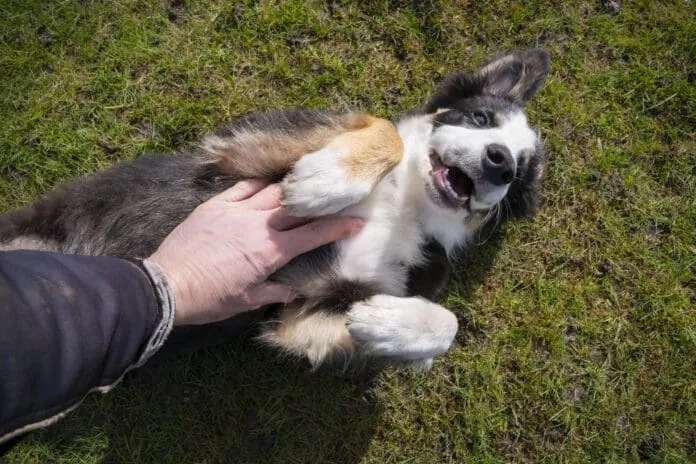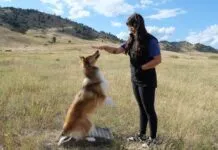There is little question about whether humans experience tickling sensations, but are dogs ticklish as well? The short answer is yes. Light touches and scratches on sensitive spots can yield very similar reactions in dogs and humans such as squirming, twitching, and playful vocalizations.
Alongside the anecdotal evidence, researchers at the University of California noted in a study that knismesis, defined as a light tickling or itching sensation, “appears to be widespread across many mammals” including dogs. Although the topic of canine ticklishness has only been sparsely researched, it is generally acknowledged that dogs as a species do experience ticklishness.
Where are Dogs Ticklish?
When it comes to if or where a specific individual is ticklish, results will vary. Some dogs will wiggle and grin at the mere suggestion of being scratched on the right spot while others just don’t seem to experience the sensation. Some are only ticklish as young puppies, but others remain ticklish throughout their lives. For dogs that are ticklish, common spots include:
- Sides
- Belly
- Chest
- Ears
- Base of the tail
- Paws
To Tickle or Not to Tickle
For humans, tickling is usually a sign of closeness – just think of how odd and uncomfortable it would be if a perfect stranger walked up to you and tried to tickle you. The same holds true for dogs. Most dogs are much more likely to enjoy being tickled by a known and trusted human rather than a stranger.
Also like humans, enjoyment of tickling sensations differs between dogs. Some love it. Others loathe it. For those that like it, tickling can be a fun part of playtime.
If you don’t yet know your dog’s preferences, go slowly to avoid creating an unpleasant experience. Pay attention to what your dog is telling you when you touch potentially sensitive spots. If he moves away from the sensation, tenses up, or exhibits stress behaviors such as yawning or lip-licking, it’s time to find another game. On the other hand, if he wiggles around on his back with his feet in the air and his tongue lolling out when you tickle his belly, it’s a good sign he’s having fun too.
Another thing to watch out for is that tickling can be fun at first but become overwhelming if it goes on too long. Take breaks to assess how your dog is feeling and stop before the sensation becomes too much to be enjoyable. Be sure to respect your dog’s boundaries if he moves away or begins showing signs of being uncomfortable.
Gear and Ticklishness
Every once in a while, there is a piece of gear – such as a harness, collar, backpack, or jacket – that just hits a dog’s ticklish spots wrong. Even if the dog typically enjoys being tickled during playtime, dealing with the sensation while on a walk or trying to rest could become annoying or uncomfortable. Some signs that a piece of equipment might be tickling or hurting a dog include:
- Skin shivering
- Biting at gear
- Walking stiffly or refusing to walk
- Scratching excessively
If your dog is demonstrating any of these behaviors, the first step is to make sure his gear is properly adjusted and fits him well. If that doesn’t resolve the issue, it’s time to find something that doesn’t hit ticklish spots.
Overall, tickling can either be a fun part of bonding and playtime or something that creates a barrier between you and your dog. It’s up to you to ensure everyone is having a good time.








